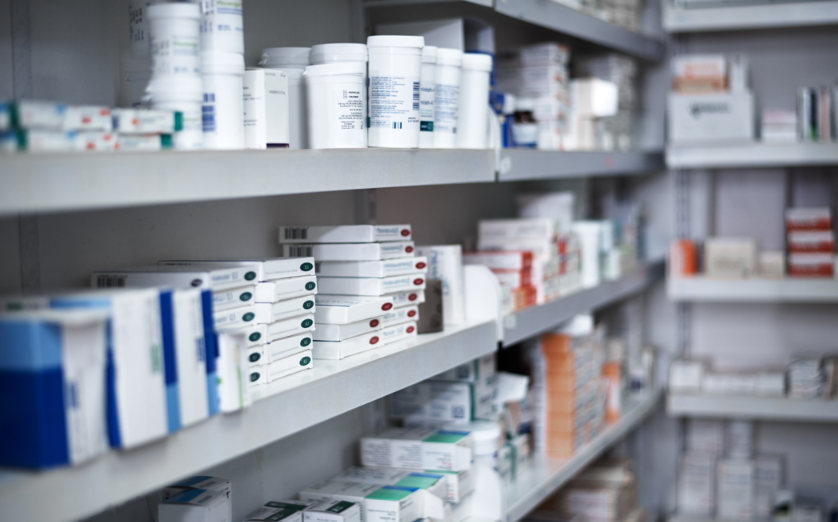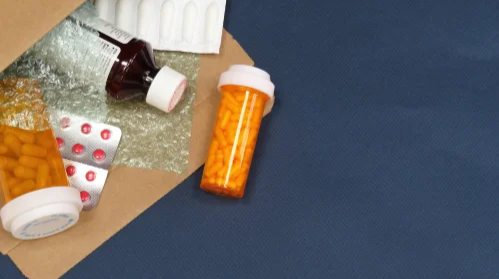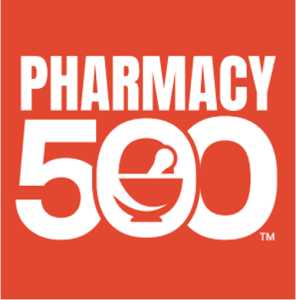Introduction
Pharmaceutical packaging design is a very important part of dispensing medications due to the strict guidelines and regulations it has. The process is tedious and time-consuming, consisting of all steps starting from drug production through distribution to the end consumer.
Compliance with pharmacy packaging regulations is essential to keep a pharmacy open and running. In this article, we will examine the important guidelines for product packaging that allow for successful dispensing. We will start by reviewing the considerations for product packaging and then learn about the challenges packaging has and the principles for effective package design. Read on to learn more.
Guidelines for Packaging Drug Products
Understanding the guidelines that govern pharmacy medication packaging and labeling is crucial for pharmaceutical success. The Food and Drug Administration (FDA) regulates labeling standards and creates the requirements for proper pharmacy labeling and quality labeling solutions.
These guidelines include primary and secondary packaging. The primary is any packaging that comes in direct contact with the pharmaceuticals, like a blister pack. Primary packaging must protect pharmaceutical products from degradation and loss of efficacy due to microbial contamination, exposure to light, and oxidation. It also must not interact with the product in any way that would alter its or its packaging properties, or release carcinogenic/mutagenic substances into the pharmaceutical product.
The secondary is any packaging that does not come into direct contact with the pharmaceuticals, including accessories like syringe plunger rods. Guidelines of secondary packaging include that the secondary packaging of any product must serve at least one of the following; light protection for the system, protection against any excessive emission of reactive gas in or out of the system, protection packaging systems needing additional handling protection or those which are flexible, protection from microbial intrusion, or protection from excessive moisture or solvent transmission in or out of the packaging system.
Both primary and secondary packaging must be suitable for the intended use according to the FDA, meaning that the packaging does not only protect the product’s dosage form but is also compatible with that dosage form. With this being said, the material used for packaging is required to be considered safe to use, both with the product’s administration and dosage form.
Aside from packaging guidelines, labeling requirements are also put into place by the FDA. Any label printing on a pharmaceutical package is required to be designed and applied in a way that it can remain and be legible in several environments and storage conditions. It must be able to withstand the entire lifespan of the product. All labels must display certain information, although the requirements for content vary, in general, a label must include; directions for use, warnings, active and inactive ingredients, official product name, and dosage. The label design is required to be a legible font size and type, be in appropriate language and format, and be made of approved materials which are all thoroughly inspected to ensure the accuracy and consistency of its information.1
Important Considerations for Product Packaging
Aside from following the specific regulations of pharmaceutical packaging, there are also ideal qualities these designs should have for consumer and manufacturer benefits. A few ideal qualities of pharmaceutical packaging include sustainable packaging, flexible printing options, domestic printing and packaging, anti-counterfeit packaging, and working alongside industry-leading partners.
Sustainable packaging is becoming increasingly popular with greener packaging and a “circular economy”. This means consumers are looking for any way they can reduce, reuse, and recycle their compost, requiring a sustainable packaging design. When selecting materials, the best companies will offer paperboard sourced from responsibly managed forests as certified by multiple nonprofit organizations. This also includes sustainable substrate alternatives like sugarcane bagasse, casein, and cotton, all hemp-based materials. Aside from the actual packaging materials, pharmaceutical companies are working to embrace the right-size packaging principles which utilize only as much material as is truly needed to protect and secure your products. Working with a domestic packaging partner also lowers carbon emissions, lessening your impact on the environment.
Flexible printing options are important for companies to have the ability to change their printing methods based on a particular situation and goals. Different types of printing include traditional, digital, and extended gamut. The best companies can provide all three and are not glued down to one specific printing option. The printing options all have different pros and cons based on the packaging your company is doing and the consumer requirements.
For manufacturers, working with a domestic medicine packaging partner is very beneficial. Companies save time, money, and the environment when choosing local partners for packaging needs rather than international suppliers. International supply chains may come with higher costs and risks, due to transportation delays. Domestic partners have shorter and simpler supply chains meaning fast delivery, lower costs, and less carbon emissions. They also have more experience and expertise with your specific local markets leading to high-quality printing and packaging based on your specific needs. Dealing with one domestic partner as a one-stop solution for everything is becoming much more popular since there are fewer disruptions and you get to know a partner closely who understands your specific process from start to finish.
Counterfeiting is a serious problem for pharmaceutical companies and their customers. Medicines that have been compromised can be ineffective, harmful to the user, or lack quality ingredients. High-quality packaging companies use many methods to prevent counterfeiting and tampering with the products that they manage. This includes using special ink that is hard to copy and requiring special devices to verify them. Some examples include; some ink may change color with temperature and show hidden marks or tamper-evident closure revealing whether a package has been altered. Finding an industry-leading packaging partner who uses techniques like this is essential for consumer safety.2
The Challenges of Pharmaceutical Packaging
Due to the many regulations and strict guidelines of pharmaceutical packaging, many challenges come with it. Packaging pharmacies have many obstacles to face when coming up with designs to best suit their pharmaceuticals. The biggest challenges seen in packaging pharmaceuticals include safe transportation, retaining medicinal quality, accurate dosage and information, conflicting packaging materials, forged products, adhering to standards, and awareness and education of practitioners and consumers.
Pills and solid dosage forms are much simpler to handle than non-solid forms due to their ability to be maneuvered easily. Liquid medication and injections, especially with glass packaging, are much more difficult and fragile to transport. Foam packaging and rotomolded cases have been becoming more popular to solve this issue. Retaining medicinal quality during transport also poses a challenge due to sustained exposure to heat and humidity. This may cause the product to lose its medicinal properties, rendering it useless. Packaging materials must be chosen carefully and should not let external factors affect the product quality.
The drug information on the outside of medicinal packages must be labeled with the correct prescribed dose. The necessary information and the drug that it is composed of must be present on the packaging of the product itself to avoid confusion. Other information including expiration dates, serial numbers, batch numbers, and more should be on the packaging as well.
Incompatible packaging material is becoming more common with the development of new-age drugs conflicting with these materials. Some drug combinations can lead to flaking of glass packaging, silicone oil in prefilled syringes disturbing the composition of protein complexes, etc. — this causes the need for newer pharmaceutical packaging materials.
With all of the new drugs, some forged drugs are on the rise. The danger of counterfeit drugs must not be underestimated due to the side effects they may have on patients. Packaging is a very important step in preventing this major problem. There is now an increase in scannable codes, hologram stickers, and UV prints that all help a real product stand out from a fake. Regulatory standards have also helped this area of conflict. It is essential packaging companies stick to strict guidelines and regulations when packaging their products to help avoid forged drugs.
Lastly, consumers need to be aware of what is inside the packaging, how to use the product, and how to dispense it. If a person is taking the wrong pharmaceutical, dosage form, dose, etc. they can have severe side effects that can damage their health. Consumer awareness and education are important when explaining the proper direction of use that must be printed on the packaging to ensure the safe and secure use of the medication.3

The Four Principles of Effective Packaging Design
Overall, there are four main principles of an effective medication packaging design which include 1) durable and high-quality products, 2) tamper-evident and secure packaging, 3) compliance with regulations, and 4) environmentally friendly finish.
Durability and high-quality packaging products are essential when transporting pharmaceuticals. The packaging protecting your products will be exposed to many different conditions like temperature change, dampness, heavy handling, etc. If the packaging is not durable and fails at the first hurdle, customers will be unhappy with the poor quality of the product and the drug may lose effectiveness, posing a threat to consumers.
A secure and tamper-evident package is essential for medication. Pharmaceuticals are often targeted and fall victim to counterfeiting. This poses a threat to consumers who may be taking these low-quality or dangerous products that circulate the market as counterfeit. Tamper-evident packaging can make all of the difference whether it comes as physical barriers that can show visual evidence of access or technology-based systems like QR codes.
Protection and security are important in pharmaceutical packaging, but overall the package must meet the guidelines and standards. Pharmaceuticals are high-risk products that come with consequences if regulations are not met. To avoid this trouble, it is crucial to make sure your packaging complies with regulations while also providing protection and security.
Sustainability is the fourth principle of effective medication packaging since it is more cost-effective and environmentally friendly. Consumer awareness and demand for eco-friendly products has heightened immensely and 81% of people now prefer to buy from sustainable seller. Just incorporating sustainable packaging puts you at an advantage in the business competition.4
Conclusion
The pharmaceutical packaging industry, owing to the sensitive nature of products and many regulations, faces a lot of challenges. Poor packaging can cause alterations in the product damaging their ability to work as curative agents. It is important to know the guidelines for pharmaceutical packaging, the regulations, common challenges, and considerations when working in the medicine packaging industry.
Overall, packaging helps to prevent damage during shipment, provides necessary information through labeling, and helps keep consumers safe. Understanding the ins and outs of it will help you choose the right products and materials based on your product and company. Learn more about pharmacy packaging do’s and don’ts, discover packaging supplies, and explore different services through our virtual trade show.5







